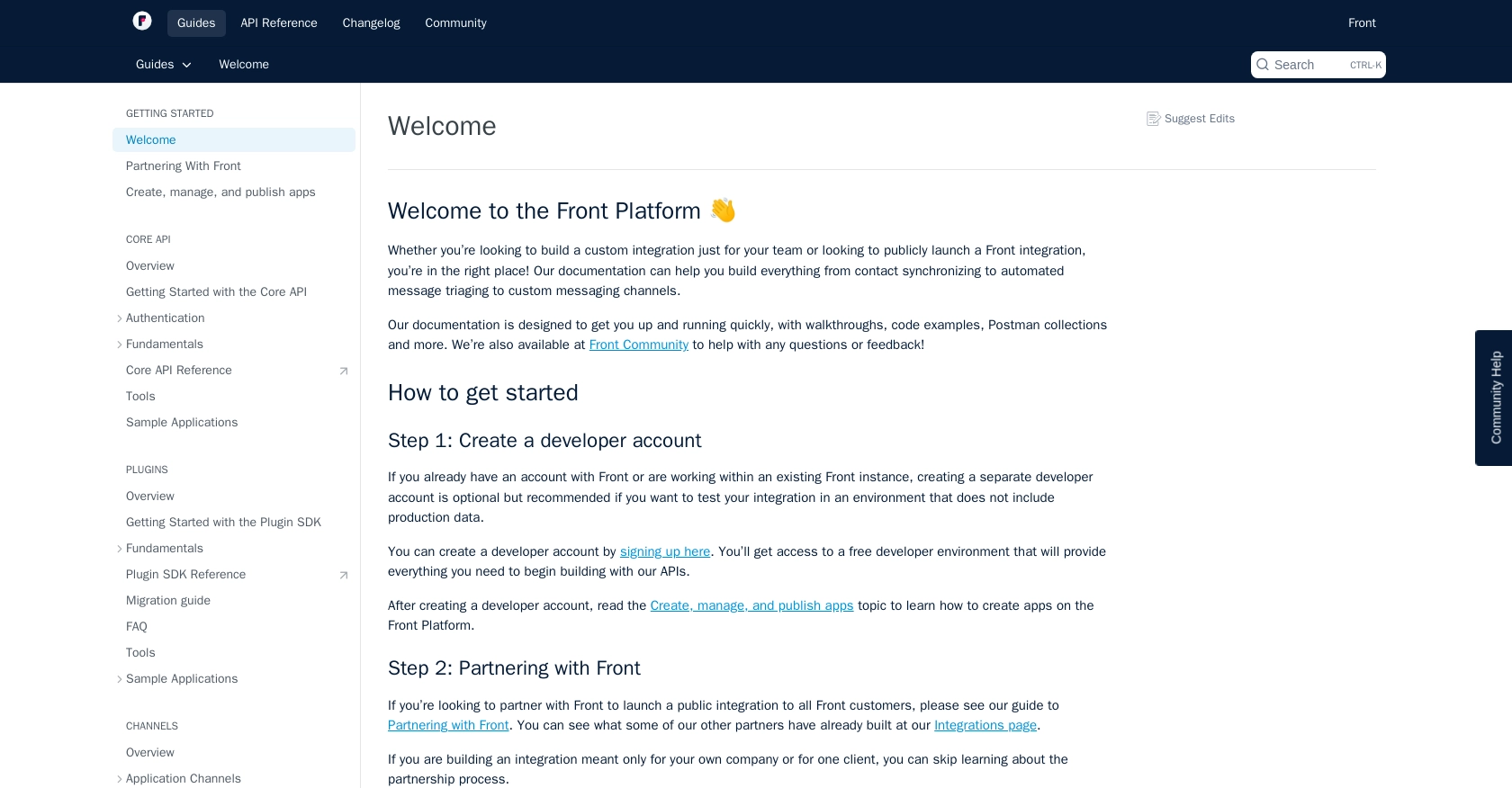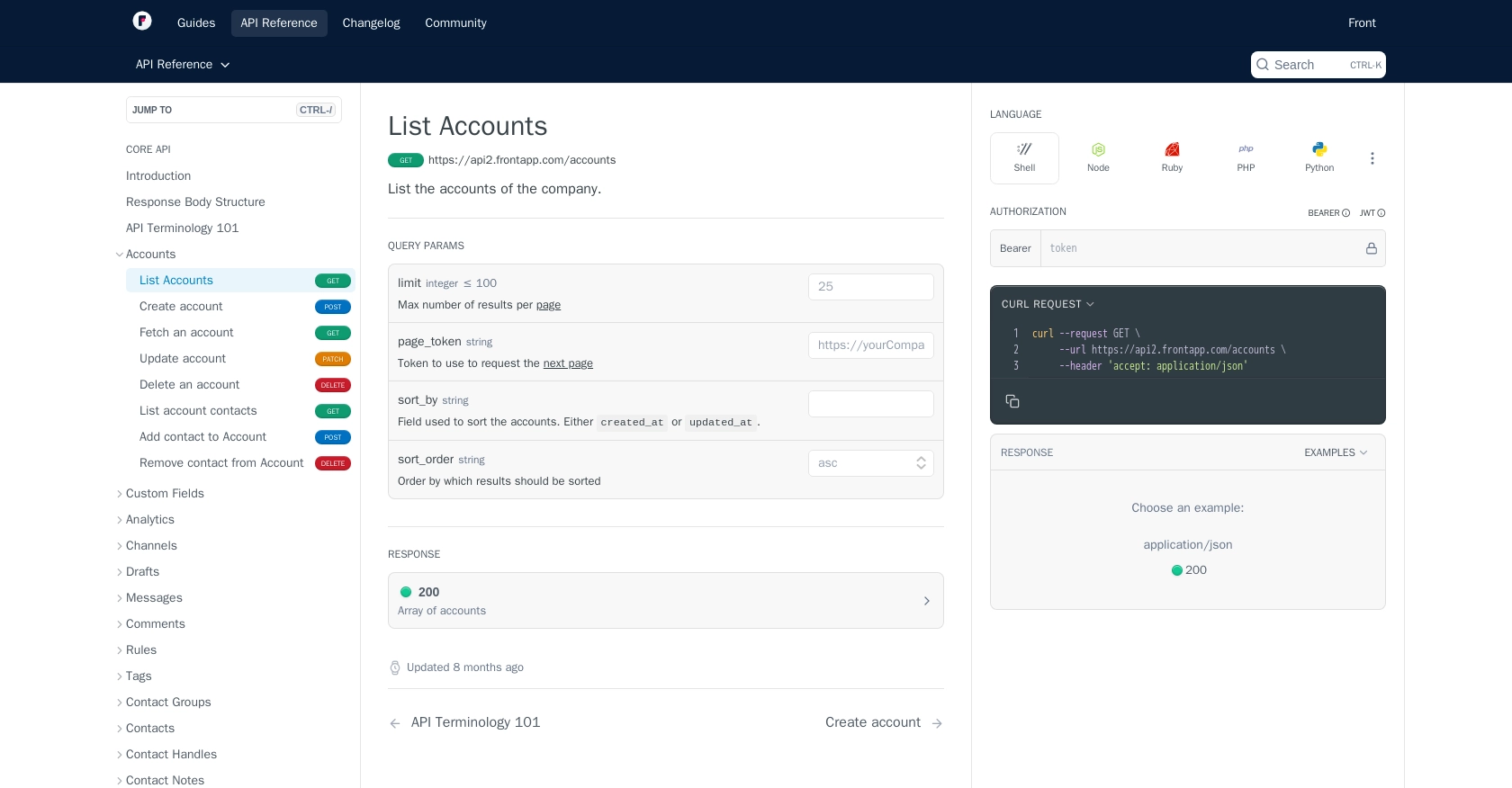How to Get Accounts with the Front API in PHP

Introduction to Front API Integration
Front is a powerful communication platform that centralizes emails, messages, and other communication channels into a single collaborative space. It is designed to enhance team productivity by streamlining communication workflows and providing a unified interface for managing customer interactions.
Developers may want to integrate with Front's API to automate and manage account data efficiently. For example, using the Front API, you can retrieve a list of company accounts, enabling seamless synchronization of account information between Front and external systems. This integration can be particularly useful for businesses looking to maintain up-to-date records and improve their customer relationship management processes.
Setting Up Your Front Developer Account for API Access
Before you can start integrating with the Front API, you'll need to set up a developer account. This account will provide you with the necessary environment to test and build your integration without affecting production data.
Creating a Front Developer Account
To begin, sign up for a free developer account on the Front website. This account will grant you access to a sandbox environment where you can safely test your API calls.
- Visit the Front Developer Portal and click on the sign-up link.
- Follow the instructions to create your account. Ensure you verify your email to activate the account.
- Once your account is set up, log in to access the developer dashboard.
Generating an API Key for Authentication
Front uses API key-based authentication for secure access to its API. Follow these steps to generate your API key:
- Navigate to the API settings in your developer dashboard.
- Click on "Create API Token" and provide a name for your token.
- Select the appropriate scopes for your integration, such as "Accounts" for accessing account data.
- Click "Generate" to create your API token. Make sure to copy and store this token securely, as it will be used to authenticate your API requests.
Configuring API Key Permissions
Ensure that your API key has the necessary permissions to access the resources you need. For retrieving account data, verify that the "Accounts" scope is enabled.
Testing Your API Key in the Sandbox Environment
With your API key ready, you can now test API calls in the sandbox environment:
- Use tools like Postman or cURL to make test requests to the Front API.
- Include your API key in the request header as follows:
$headers = [
'Authorization: Bearer YOUR_API_KEY',
'Content-Type: application/json'
];
Replace YOUR_API_KEY with the API key you generated.
By following these steps, you'll have a fully configured developer account and API key, allowing you to interact with the Front API and retrieve account data seamlessly.

sbb-itb-96038d7
Making API Calls to Retrieve Accounts with Front API in PHP
To interact with the Front API and retrieve account data using PHP, you'll need to ensure you have the correct setup and dependencies. This section will guide you through the process of making API calls, handling responses, and managing errors effectively.
Setting Up Your PHP Environment for Front API Integration
Before making any API calls, ensure your PHP environment is properly configured. You'll need:
- PHP version 7.4 or higher
- The
cURLextension enabled
Verify your PHP version and installed extensions by running the following command:
php -vphp -m | grep curlInstalling Required PHP Dependencies
To make HTTP requests, you'll use PHP's cURL library. Ensure it's installed and enabled in your PHP configuration.
Example Code to Retrieve Accounts from Front API
Below is a sample PHP script to retrieve accounts using the Front API:
Replace YOUR_API_KEY with the API key you generated earlier.
Handling API Responses and Errors
After executing the API call, it's crucial to handle responses and potential errors:
- Check for HTTP status codes to ensure the request was successful.
- Handle errors gracefully by checking for
curl_errnoand displaying appropriate messages. - Parse the JSON response to access account data and verify its structure.
Verifying API Call Success in the Front Sandbox
To confirm the success of your API call, log into your Front sandbox environment and verify that the retrieved account data matches the expected results. This ensures that your integration is functioning correctly.
Managing Rate Limits and Best Practices
Front API has a rate limit of 50 requests per minute for the Starter plan. Monitor your API usage and implement retry logic if you encounter a 429 status code. For more details, refer to the Front API rate limiting documentation.
By following these steps, you'll be able to efficiently retrieve account data from Front using PHP, ensuring a seamless integration experience.

Conclusion and Best Practices for Front API Integration in PHP
Integrating with the Front API using PHP allows developers to efficiently manage and synchronize account data, enhancing customer relationship management and streamlining communication workflows. By following the steps outlined in this guide, you can set up a robust integration that leverages Front's powerful features.
Best Practices for Secure and Efficient Front API Usage
- Secure API Key Storage: Always store your API keys securely and avoid hardcoding them in your source code. Consider using environment variables or secure vaults.
- Handle Rate Limits: Be mindful of Front's rate limits, which start at 50 requests per minute for the Starter plan. Implement retry logic and exponential backoff strategies to handle 429 status codes gracefully. For more information, refer to the Front API rate limiting documentation.
- Data Transformation and Standardization: Ensure that data retrieved from Front is transformed and standardized to match your system's requirements, facilitating seamless integration and data consistency.
Enhance Your Integration Strategy with Endgrate
While building integrations with the Front API can be rewarding, it can also be time-consuming and complex. Endgrate offers a solution by providing a unified API endpoint that connects to multiple platforms, including Front. This allows developers to build once for each use case, saving time and resources.
By leveraging Endgrate, you can focus on your core product while outsourcing integrations, ensuring an easy and intuitive experience for your customers. Explore how Endgrate can streamline your integration processes by visiting Endgrate.
Read More
Ready to get started?
